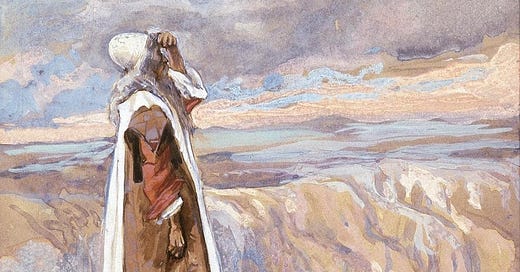This post is for paid subscribers. If you’ve been encouraged by the content of this Biblical Theology site, and if you’d like to have complete and unending access to hundreds of archived articles, consider supporting this newsletter. Your support is such a blessing!
Photo credit: TheTorah.com
In the last chapter of Deuteronomy, Moses dies. As readers, we knew the report would come eventually, because the Israelites were poised to enter the land—and Moses wouldn’t be going with them.
At last, in Deuteronomy 34:5–6, we read of Moses’s death: “So Moses the servant of the LORD died there in the land of Moab, according to the word of the LORD, and he buried him in the valley in the land of Moab opposite Beth-peor; but no one knows the place of his burial to this day.”
Well, that’s not a burial scene like we’re used to reading. We might have expected something like the end of Genesis, where Jacob’s family transported Jacob to Canaan for burial and then returned to Egypt (Gen. 50:1–14). Or, in Joseph’s case, his body was embalmed and put in a coffin (50:26).
But in Deuteronomy 34, there’s no reference to a close friend or family member who handled the body of Moses. In fact, no other human being seems to be involved at all.




